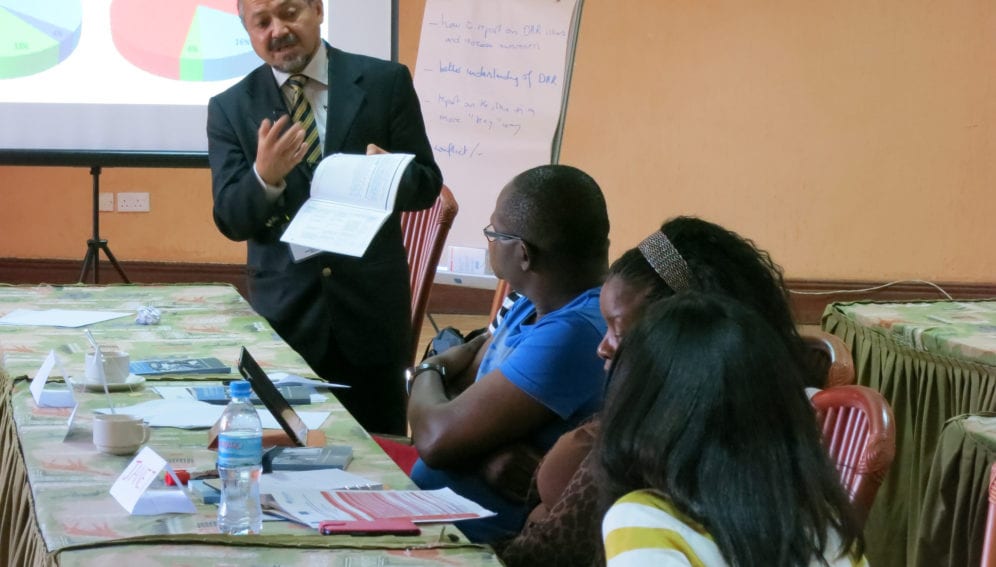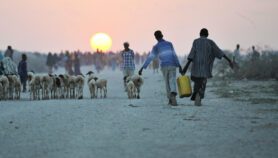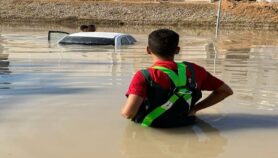By: Jan Piotrowski
Send to a friend
The details you provide on this page will not be used to send unsolicited email, and will not be sold to a 3rd party. See privacy policy.
Science is a driving force behind international disaster risk reduction (DRR) and is prominent in a preliminary blueprint for a future framework, says a member of the team leading the process.
The ten-year global plan that sets out how various sectors can work to reduce losses from disasters, known as the Hyogo Framework for Action (HFA), ends in 2015.
During more than 100 consultations held since 2012 to draft a replacement plan, science has consistently been highlighted as important for good DRR decision-making, says Pedro Basabe, senior programme officer at the UN Office for Disaster Risk Reduction (UNISDR).
This interest is manifest in the so called ‘pre-zero draft’ for the post-Hyogo framework, a document that will guide the discussions leading up to the Third United Nations World Conference on Disaster Risk Reduction in Sendai, Japan from 14-18 March 2015, where a post-Hyogo plan is expected to be adopted.
The draft published last month (8 August) makes “significant improvements on the previous Hyogo text”, he tells SciDev.Net.
“Science plays a more substantive role, not just in the priorities for action, but as a fundamental guiding principle,” Basabe says.
One of these core maxims is that good DRR decision-making is founded on clear and simple scientific information for a wide range of issues, such as characterising physical hazards, socio-economic impacts and vulnerability, according to the draft report.
Research must be accessible, and efforts should be made to promote free and open access to information about disasters, loss and risk, and well as distributing it “at all levels, taking into account different categories of users,” it says.
Special attention must be given to developing countries, which includes making time-bound commitments to providing the resources and technology to implement DRR strategies, it says.
“Science plays a more substantive role, not just in the priorities for action, but as a fundamental guiding principle.”
Pedro Basabe, UNISDR
The draft outlines how crucial it is to improve scientific and technical capacity to collect, use and disseminate disaster data, and to develop methods to assess vulnerability to climate, geology and water-related hazards — and how these impact communities.
It also calls on the research community to improve its interdisciplinary collaboration, with better links between economic and social sciences, as well as with DRR practitioners.
Academics should work together to take the lead in doing research that is relevant and useful to local communities, building medium- and long-term risk scenarios and strengthening the science-policy interface, it says.
The report’s authors also suggest revitalising the UN’s Scientific and Technical Committee to play a role as an international advisory mechanism, which could help implement and monitor a future DRR framework.
The general change of emphasis from the international to the community level is a major step for DRR, says Stu Solomon, programme manager for the Global Network of Civil Society Organisations for Disaster Reduction.
But how this shift relates to scientific information is currently too vague, he tells SciDev.Net.
Although the draft highlights many pathways for evidence to be used at national and international levels, it offers little help on how to put scientific information into the hands of local communities, he says.
“What hasn’t moved forward [from the HFA] is finding tools and knowledge-sharing mechanisms that allow local governments and community leaders to act on evidence,” he tells SciDev.Net.
“The technical science being done is wonderful. The reality is that it is not actually making a difference in the communities that need it the most.”
But a UNIDSR spokesperson refuted this criticism, pointing to the numerous community-based DRR activities that the draft refers to, including a local self-assessment tool linked to the Hyogo framework, and formal and informal education initiatives.














